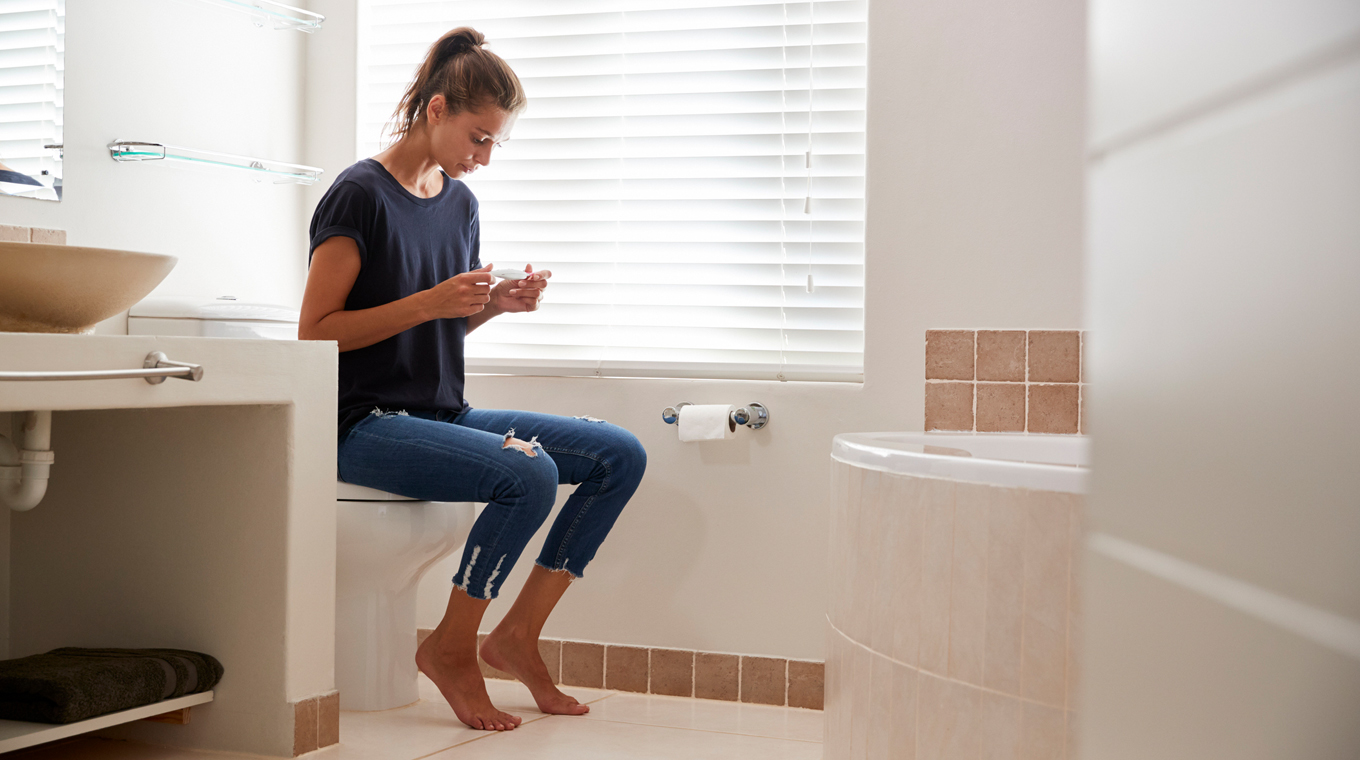
In this article
Trying to conceive? Or maybe trying to not conceive? Either way, every woman should know how to take a pregnancy test.
When we were “planning to plan” to have our first baby, I was so focused on the “getting pregnant” part of everything that I honestly didn’t even consider how I’d find out. I wasn’t even sure when to take a pregnancy test. I’d never taken a pregnancy test, and up until the point my biggest concern was not getting pregnant.
I could have been the poster child for birth control. I could have given lessons on how not to get pregnant. I never could have imagined what a nerve-racking ordeal trying to find out if I was pregnant would turn out to be. And no one told me that I’d go through 13 tests, two obstetricians, and no less than seven ultrasounds to confirm one pregnancy. Who knew a pregnancy test was such a process? Here’s hoping I can make it a little easier for you.
How to know when to take a pregnancy test?

Most importantly, wait to take the test on the right day. What’s the right day? It’s the day after your period was supposed to arrive. If your period was supposed to come on Saturday — the first day of vacation, of course — test on Sunday, one day late. If you’re trying to conceive, I’m sure you’ve been tracking your cycle, so this bit should be easy peasy. If not, go at least one day past your longest cycle.
A pregnancy test detects and measures the pregnancy hormone in a woman’s bloodstream after implantation. “Basically, the basis of all pregnancy tests — blood or urine — is the detection of human chorionic gonadotropin (hCG),” Dr. Anate Brauer, OB-GYN,wrote on MyDomaine.com
Don’t take the pregnancy test too early or results could be wrong. If you’re taking fertility treatments, wait at least 10 days after a trigger shot.
What will you need to take a pregnancy test?
Get your supplies ready the night before, so you can do it as soon as you wake up.
- A pregnancy test
- A timer
- The first urine of the morning — pregnancy hormones are highest when you first wake up
- A disposable cup, if using a dipstick test
How do you take a pregnancy test?

Getty Images
First and foremost, read the directions. That information is important and reading the results incorrectly can change your entire life. You’ll need those directions to know the answers to some simple questions. You didn’t know there would be a test, did you? Pay attention, mama.
When it comes to what type of test, mom and blogger Nancy Horn advised skipping the bargain brands. “Get the top of the line test. They work better than the cheap dollar store tests and are more effective,” she told Mom.com.
Make sure to consult your test directions to answer these questions:
- Will you be peeing on a stick or into a cup?
- How long do you need to pee on this stick, anyway?
- Is there a removable cap on the test stick? Don’t pee on that.
- Does that cap go back on after taking the test?
- How long do you dip a strip into a cup?
- Where do you put the urine drops on a cartridge test? What is a cartridge test?
- How many minutes do you have to wait before you know if you’re going to be a baby mama?
- What’s the max time that results are valid? (Waiting too long to read the results can sometimes give you a false positive. Don’t do that to yourself.)
- What does a negative look like?
- What does a positive look like?
Grab your cup. It’s go time.
- Take the cap off the pee stick.
- Pee on the stick.
- When you’re all done, wash your hands and set a timer.
After you set the timer, go distract yourself. Jump on social media or watch cute kitten videos. Don’t wait and watch the test — you will make yourself insane. I’ll tell you some real truth: Even when you get that positive, you’ll take more tests because you won’t believe it so have some on hand.
How to read a pregnancy test?

Getty Images
You’ve waited three minutes. The timer just went off and now it’s time for the big reveal.
Look at those directions one more time, and make sure that you are within the time frame to read for maximum accuracy.
Look at the result. Consult the directions to make sure that you are reading the negative or positive correctly.
Digital tests usually spell it out for you: pregnant or not pregnant.
Line tests are a little more cryptic.
- One pink line is negative
- Two pink lines is positive
- No lines mean the test is broken
Congratulations, you are either pregnant or you are not. I hope you got the results you wanted.




